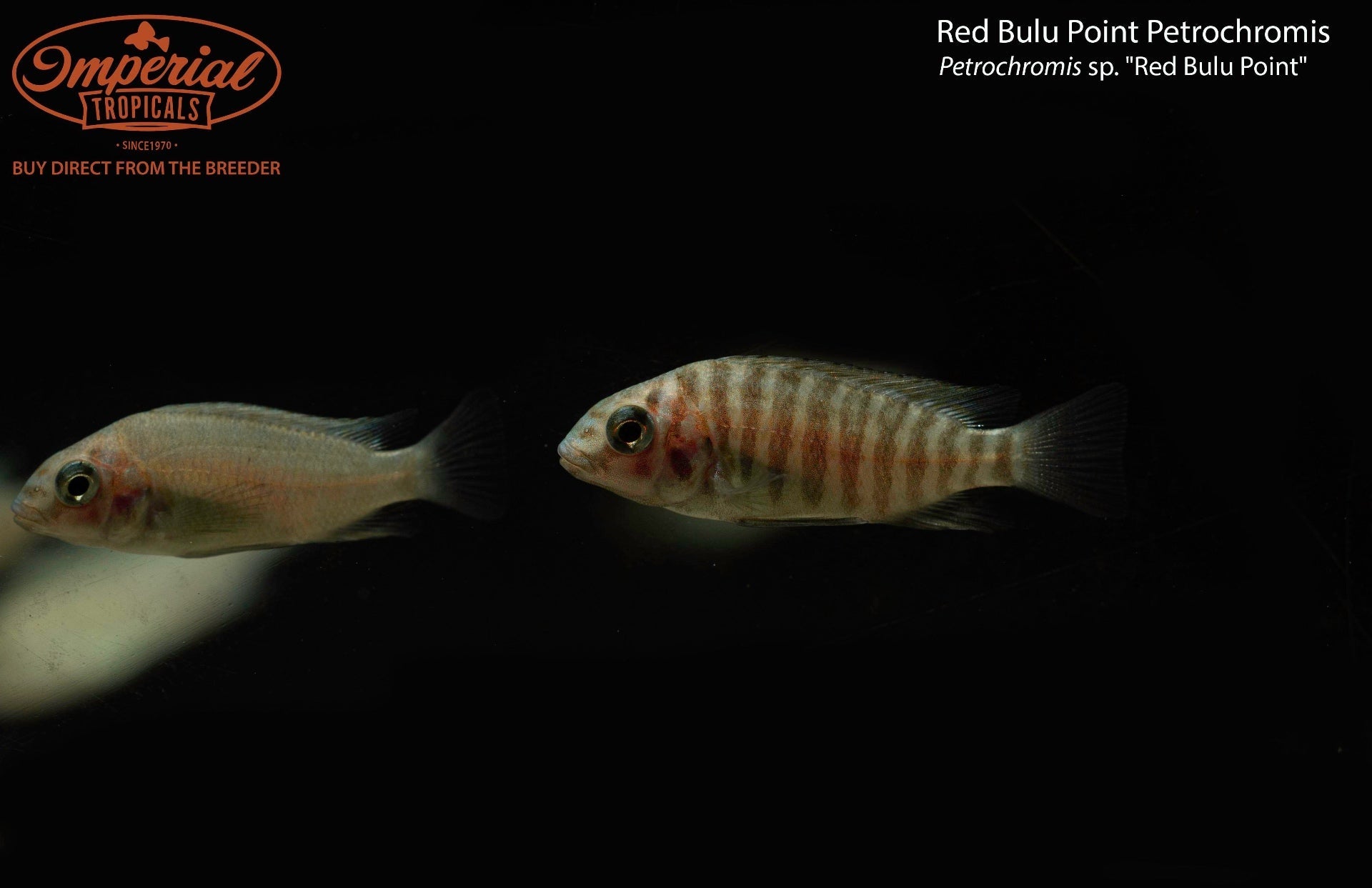
Remarks: The red Bulu Point Petrochromis is an absolute gem from Lake Tanganyika that is rarely seen within the hobby. You will be hard pressed to find a cichlid from Tanganyika that displays the amount of red seen in an adult male of this species. Adult males, when in breeding dress, are an intense, neon red or orange with a black "mask" and ventral and pectoral fins. Females tend to be gray with a few patches of pale orange and juveniles are silver with faint vertical bars. Many note it takes quite some time for males to begin to show lots of color, most remaining pale until they reach about 4-5 inches in length, but if their voracious appetite is attending to and they are well cared for, they can reach that size in a matter of months.
Despite it being in their name, these fish do not actually come from Bulu Point but are rather exported from there. The collection location for this rare, deep-water dwelling cichlid is actually from the Mahal National Park. There are two collection points with those from Lyamembe being more orange and those from Mahale being more red. Our line likely originates from Lyamembe as they tend to display the orange coloration more often than the red, but this is not confirmed.
It should be noted that this species is a very large and sensitive Petrochromis from the macrognathus group so they are not a beginner species of Petrochromis and should be reserved for keepers that have experience with the smaller, more easily kept species such as Petrochromis trewevasae. Like all that belong to their genus, red Bulu Point Petrochromis are similar to Tropheus in that their natural diet is mostly comprised of algae and they are sensitive to protein, too much of which can cause bloat. Their large, protruding lips are indicative of this diet as they aid them in scraping rocks and other surfaces for algae.
Another similarity they have with Tropheus is that they are best kept in a species only tank with at least 12-15 individuals in a ratio of about 5-6 females for every male. These large numbers are needed because while they feel the most comfortable and confident in groups, Petrochromis species are still extremely territorial and have a vicious pecking order. If there are not enough fish to spread out the aggression, the smallest or at least less dominant fish will be picked off until there is only one left. These cichlids also do not tolerate poor water quality or incorrect parameters. Therefore, to keep these fish in large numbers with lots of territory space and pristine water, the absolute minimum tank size would be a 180 gallon tank. 200 gallons or more is much more ideal, however. All these aspects make Petrochromis a fairly difficult species to keep long term but their fascinating behaviors, beautiful colors, and rarity make it worth it for the advanced keeper.